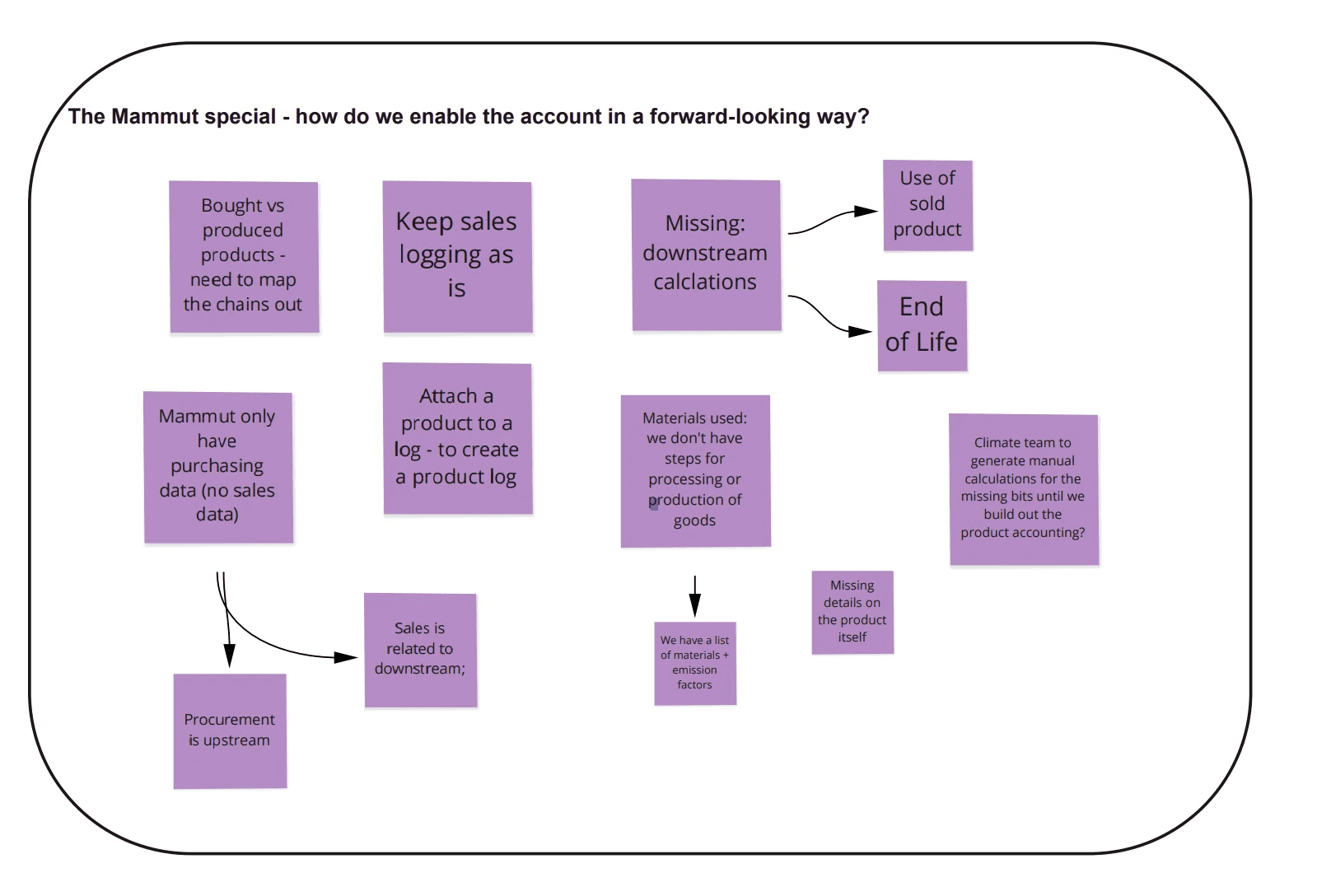Product Carbon Footprint
Why? — For product or service companies is important to have a detailed view over the entire product lifecycle emissions. — PCF consultancy costs are high. — Strong product differentiator since none of our direct competitors offer this. Also dedicated PCF platforms are known to be vert complex to work with.
Role
Senior Product Designer. Leading the discovery process and creating the first design concept/prototype.
Became a design lead after that and delegated further work and improvements to other Product Designer.
Goal
We already had a way for customers to log their company carbon footprint, so we wanted to provide a similar experience for companies to log their product emissions.
Why?
— For product or service companies is important to have a detailed view over the entire product lifecycle emissions.
— PCF consultancy costs are high.
— Strong product differentiator since none of our direct competitors offer this. Also dedicated PCF platforms are known to be vert complex to work with.
Challenges
Dealing with unknown and complexity
In this area is really hard to get to know what kind of solutions our competitors have in place. Furthermore, we work with specific requirements of specific entities so it was from a huge importance to work with our main client and our team of climate experts to really understand what were the main scientific and technical needs.
Understand how companies usually get this data
Understanding how companies get data from suppliers or from internal teams was crucial. This had a huge important to clarify the granularity of the data we needed to deal with in this new part of the product we were creating (comparing with CCF – company carbon footprint data). Different user roles inside of the same business unitMap out the JTBD of the different user types involved and understand how they differ and how could we allow them to view or/and edit the entire product lifecycle.


First flows and brainstorm with the team.User interviews to understand what companies needed to be able to plan.
Process
Step 1
Co-creation sessions started
Expectations alignment.
Step 2
First flows and brainstorm with the team.
User interviews to understand what companies needed to be able to plan.
Step 3
1st Prototype done. Interviews Usability testing (co-creation team and other clients)
Step 4
Research report. Prototype refined. Sessions w/ clients to refine last questions .
Define JBTD per user role.Step 5Split prototype into interactions and decide on dev plan.

PCF userflow and requirements list, used to communicate to the team the final skeleton of the project and to help with the iteration split
Solution
Lifecycle steps
Cover the whole lifecycle of a product, from cradle to grave, by following a step-by-step flow with concepts that every user can easily relate to.

Product types and pre-filled assumptions
When indicating the product type you’re accounting for, we automatically pre-fill the downstream steps. This is exactly the data that is most difficult to get by companies.

Product detail page and statistics data overview
Have a better overview of the amount of data you’re account for by browsing a product detail page.

Live product
After the first 3 iterations this was the product experience of our customers while interacting with the product.



